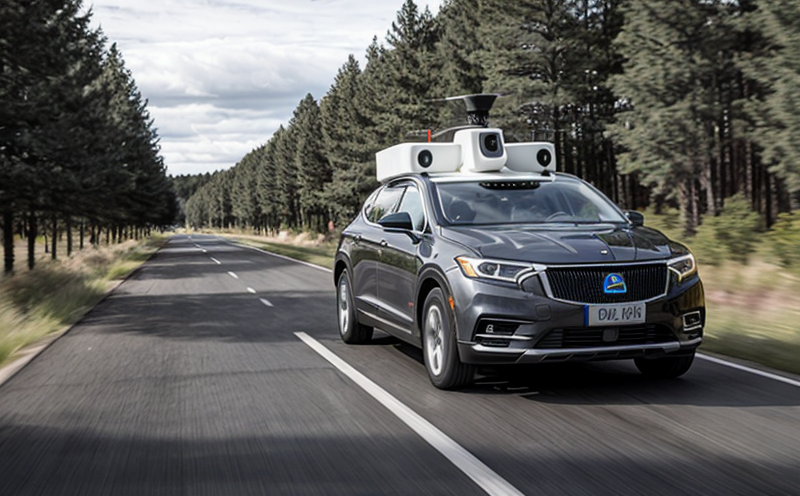ISO 21448 Safety of the Intended Functionality (SOTIF) for Autonomous Robots
The International Organization for Standardization's ISO 21448 standard provides a framework for ensuring that autonomous robots are safe and reliable, particularly in environments where they operate without direct human supervision. This standard focuses on safety of the intended functionality (SOTIF), which encompasses all activities related to the robot's behavior under normal operating conditions as well as potential malfunctions or failures.
The ISO 21448 framework is designed for systems that must meet specific functional safety requirements, including those used in robotics and artificial intelligence. Autonomous robots are increasingly being deployed across various sectors such as manufacturing, healthcare, agriculture, and public services, where their safe operation is crucial to prevent accidents or damage. This standard ensures that autonomous robots can operate safely within the intended operational environment (IOE).
The process involves a series of steps aimed at identifying potential risks associated with the robot's functionality throughout its lifecycle—from design through production, installation, commissioning, use, and maintenance.
- Identify functional requirements: Define what the robot needs to do safely.
- Analyze safety risks: Evaluate how these functions might lead to unintentional behavior or harm.
- Implement risk mitigation measures: Develop strategies to reduce identified risks, ensuring that any residual risk is acceptable.
- Verify functionality and compliance: Through testing and validation, confirm that the robot operates safely according to its intended functionality.
The ISO 21448 standard also emphasizes continuous monitoring of operational data post-deployment. This ongoing assessment helps in identifying any emerging risks or issues that need addressing promptly. By adhering to this framework, manufacturers and operators can ensure their autonomous robots meet the stringent safety standards required by regulatory bodies worldwide.
This testing methodology is particularly important given the rapid advancement in AI and robotics technology. As more complex robotic systems are introduced into critical environments, ensuring they function safely becomes paramount. ISO 21448 provides a structured approach that allows stakeholders to confidently deploy autonomous robots knowing they have been rigorously tested against international safety standards.
| Key Components of SOTIF | Description |
|---|---|
| Risk Identification | Identify potential risks associated with the robot's intended functions. |
| Risk Analysis | Evaluate likelihood and severity of identified risks. |
| Risk Mitigation | Implement measures to eliminate or reduce risk. |
| Verification | Validate that the implemented measures adequately address identified risks. |
| Phases of SOTIF Implementation | Description |
|---|---|
| Pre-Deployment | Conduct risk identification and analysis, develop mitigation strategies. |
| During Deployment | Monitor system performance continuously for any emerging risks. |
| Post-Deployment | Review operational data to confirm ongoing compliance with safety requirements. |
The ISO 21448 framework ensures that autonomous robots are not only capable of performing their intended tasks but also do so safely, even under adverse conditions or unforeseen circumstances. This approach enhances trust in robotic systems and supports the development of safer, more reliable technologies.
Industry Applications
The ISO 21448 standard is applicable to a wide range of industries where autonomous robots play a critical role. These include:
- Manufacturing: Ensuring robots in production lines operate safely, reducing accidents and downtime.
- Healthcare: Providing robotic systems that assist with surgeries or patient care without compromising safety standards.
- Agriculture: Deploying drones or other autonomous machines for crop monitoring, harvesting, and spraying pesticides.
- PUBLIC SERVICES: Using robots in disaster response scenarios to assess environments safely before human intervention.
In each of these sectors, the standard helps ensure that autonomous robots can operate reliably within their intended operational environment (IOE), thereby minimizing risks associated with human error or system failure. By adhering to ISO 21448, organizations can demonstrate compliance with international safety standards while enhancing public trust in robotic technologies.
Why Choose This Test?
Selecting the right testing service is crucial for ensuring that your autonomous robots meet all necessary safety and functionality requirements. Here are several reasons why choosing ISO 21448 compliance testing:
- Enhances Safety: Demonstrates adherence to international standards, ensuring safe operation in diverse environments.
- Regulatory Compliance: Helps meet regulatory requirements set by various national and international bodies.
- Risk Mitigation: Identifies potential risks early on, allowing for proactive risk management strategies.
- Customer Confidence: Provides assurance to end-users that your products are safe and reliable.
- Innovation Support: Encourages continuous improvement in design and functionality, fostering innovation within the robotics sector.
- Market Differentiation: Sets you apart from competitors by showcasing a commitment to high-quality safety standards.
The comprehensive approach of ISO 21448 ensures that autonomous robots are not only capable of performing their intended tasks but also do so safely, even under challenging conditions. This can significantly enhance the reputation and market position of any company involved in robotics technology development or deployment.
Customer Impact and Satisfaction
The implementation of ISO 21448 safety testing has a profound impact on both customers and end-users. By ensuring that autonomous robots meet stringent safety standards, organizations can:
- Increase Customer Trust: Provide peace of mind to those who rely on robotic systems for critical tasks.
- Boost Product Quality: Minimize the risk of accidents or failures, thereby enhancing product reliability.
- Promote Industry Standards: Contribute to setting benchmarks that other companies aspire to follow.
- Elevate Brand Reputation: Demonstrate a commitment to excellence in safety and technology.
- Support Continuous Improvement: Encourage ongoing enhancements based on real-world data and feedback.
- Facilitate Global Markets: Ensure compliance with international standards, opening doors for global business opportunities.
A satisfied customer base translates directly into increased market share and long-term profitability. By prioritizing ISO 21448 compliance testing, companies can build lasting relationships with their customers while setting industry precedents for safety and quality.





